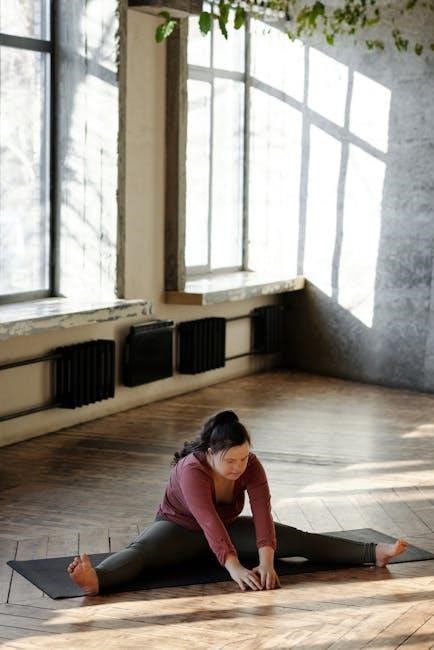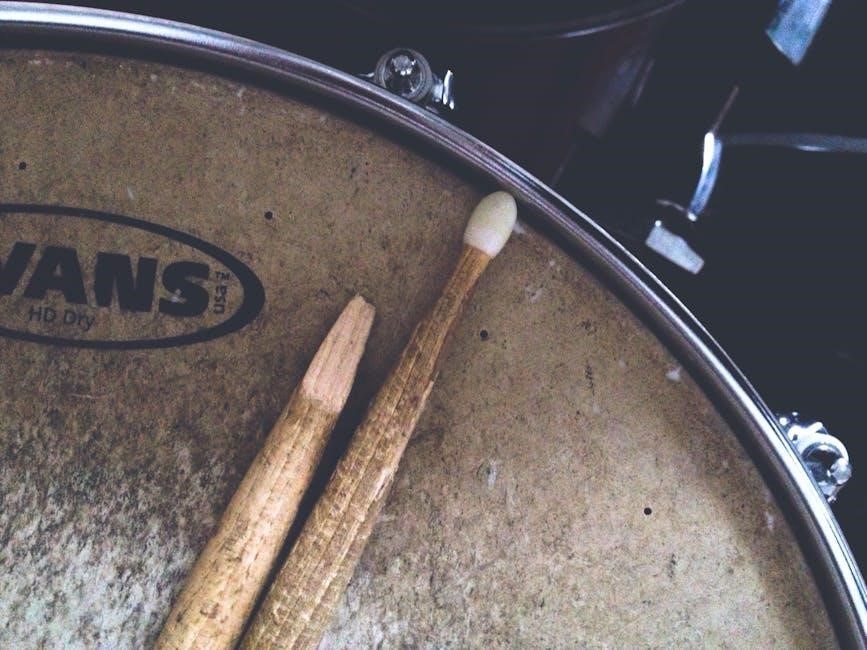
IT Band Syndrome: Exercises for Relief and Recovery

Iliotibial Band Syndrome (ITBS) is a common condition,
especially among runners and athletes. This guide provides
stretching and strengthening exercises to relieve pain. The
exercises will aid in the recovery and improve IT band
flexibility and overall hip and leg strength.
Understanding IT Band Syndrome (ITBS)
IT Band Syndrome (ITBS) is a common ailment, particularly among
athletes and runners. It manifests as pain on the outer side of
the knee, often exacerbated by repetitive activities. Understanding
the underlying causes and mechanisms of ITBS is crucial for
effective management and prevention.
The iliotibial (IT) band is a thick band of fibrous tissue that runs
along the outside of the thigh, from the hip to the knee. Its primary
function is to stabilize the knee joint during movement. ITBS occurs
when this band becomes inflamed or irritated, usually due to
repetitive friction against the lateral femoral epicondyle (the bony
prominence on the outside of the knee). Factors contributing to ITBS
include overuse, improper training techniques, muscle imbalances, and
anatomical variations. Recognizing these elements is the first step
in addressing and alleviating the discomfort associated with ITBS.

What is the IT Band?
The Iliotibial (IT) band is a thick band of fibrous tissue that
extends along the outside of the thigh, playing a crucial role in
stabilizing the knee and hip. Originating from the iliac crest, it
runs down the lateral aspect of the thigh and inserts into the tibia,
just below the knee.
This band is not a muscle but rather a strong connective tissue that
connects several muscles, including the tensor fasciae latae (TFL) and
the gluteus maximus, to the lower leg. Its primary functions include
aiding in hip abduction, lateral rotation, and knee stabilization.
The IT band helps control movement during activities like running,
walking, and jumping. Understanding its anatomy and function is
essential for comprehending why it is susceptible to injury and
inflammation, leading to conditions like IT Band Syndrome.
Causes and Symptoms of ITBS
IT Band Syndrome (ITBS) arises from various factors that cause
irritation and inflammation of the IT band. Overuse, especially in
activities like running, is a primary cause. Repetitive knee flexion
and extension can lead to the IT band rubbing against the lateral
femoral epicondyle, a bony prominence on the outside of the knee.
Other contributing factors include improper training techniques, such as
suddenly increasing mileage or intensity, inadequate warm-up and
cool-down routines, and poor biomechanics.
Symptoms of ITBS typically manifest as pain on the outer side of the
knee, which may radiate up the thigh. The pain often worsens during
or after exercise. Other symptoms include tenderness to the touch
along the IT band, a snapping or popping sensation at the knee, and
tightness in the hip and thigh muscles.

Stretching Exercises for IT Band Syndrome
Stretching exercises are crucial for managing IT Band Syndrome
(ITBS). These stretches enhance flexibility, reduce tension, and
alleviate pain. Regular stretching can prevent further irritation
and promote healing.
Foam Roller Exercises for IT Band Mobilization
Foam rolling is an effective method for IT band mobilization,
helping to release tension and improve flexibility. To perform this
exercise, lie on your side with the foam roller positioned under
your hip. Cross your top leg over, placing your foot on the
ground for support. Use your arms to stabilize your body and
begin rolling from your hip down to just above the knee.
Maintain a straight line with your body, avoiding bending at the
hips. This exercise may cause some discomfort or even bruising, so
adjust the pressure as needed. Use your top leg and hand to
offload pressure if it’s too intense. Aim for 3 sets of 10
repetitions, rolling slowly and deliberately over the affected area.
Focus on any particularly tight spots, pausing for a few seconds to
allow the foam roller to work deeper into the tissue. Regular foam
rolling can help break up adhesions, reduce inflammation, and
improve overall IT band function. Remember to complement foam
rolling with other stretching and strengthening exercises for
comprehensive ITBS management.
Side-Lying IT Band Stretch
The side-lying IT band stretch is a simple yet effective way to
increase flexibility and reduce tension in the iliotibial band. To
perform this stretch, lie on your side with the affected leg on
top. Position your bottom leg straight, and bend your top leg at
the knee, placing your foot behind your bottom thigh.
Gently pull your top foot towards your buttocks, intensifying the
stretch along the outside of your thigh. You should feel a
pulling sensation along the IT band, from your hip down to your
knee. Hold this position for 20-30 seconds, breathing deeply to
relax the muscles.
Ensure that your hips remain stacked and your body stays in a
straight line to maximize the stretch’s effectiveness. Avoid
twisting or rotating your torso. Repeat this stretch 2-3 times on
each side, focusing on maintaining proper form. This stretch is
particularly beneficial after exercise or any activity that
aggravates IT band syndrome symptoms. Regular practice can help
improve flexibility and alleviate pain associated with ITBS.
Standing IT Band Stretch
The standing IT band stretch is an accessible and convenient way to
target the iliotibial band, promoting flexibility and relieving
tension. Begin by standing with your feet shoulder-width apart.
Cross the affected leg behind the other leg, keeping both feet flat
on the ground.
Next, lean towards the side of the uncrossed leg, allowing your
hip to shift slightly outward on the side of the crossed leg. You
should feel a stretch along the outside of your thigh, targeting
the IT band. For added support, you can place the hand of the
uncrossed leg on a wall or stable surface.
Hold this position for 20-30 seconds, breathing deeply to
encourage relaxation and increase the stretch’s effectiveness. Make
sure to keep your back straight and avoid bending at the waist.
Repeat this stretch 2-3 times on each side. This standing
variation is particularly useful as a quick stretch during the day
or before and after physical activity. Regular practice can help
reduce IT band tightness and alleviate associated pain.
Supine IT Band Stretch with Strap
The supine IT band stretch with a strap is an effective method to
target the iliotibial band while lying down, allowing for a
controlled and gentle stretch. Begin by lying on your back with
your legs extended straight. Take a strap or resistance band and
loop it around the foot of the affected leg.
Hold the ends of the strap with your hands. Gently pull the leg
across your body towards the opposite shoulder, keeping the knee as
straight as is comfortable. You should feel a stretch along the
outside of your thigh, targeting the IT band. Ensure that your
opposite hip remains on the ground to maximize the stretch in the
IT band.
Hold this position for 20-30 seconds, breathing deeply and
relaxing into the stretch. Avoid forcing the leg too far, and stop
if you feel any sharp pain. Repeat this stretch 2-3 times on each
side. This supine variation is particularly beneficial for those
with limited mobility or who prefer a more supported stretch.
Regular practice can help improve IT band flexibility and reduce
associated discomfort.

Strengthening Exercises for IT Band Syndrome
Strengthening exercises are crucial for IT band syndrome
rehabilitation. They focus on the hip and thigh muscles. These
exercises reduce strain on the IT band. Incorporating these
strengthening routines helps improve stability, balance, and
overall lower body function.
Hip Abduction Exercises
Hip abduction exercises are vital for strengthening the muscles
responsible for moving the leg away from the midline of the body.
These exercises primarily target the gluteus medius, a key muscle
in hip stabilization and pelvic alignment. Weakness in the gluteus
medius can contribute to IT band syndrome by causing the hip to
drop during activity, increasing stress on the IT band.
Several effective hip abduction exercises can be incorporated into a
rehabilitation program. Side-lying leg lifts involve lying on your
side with the affected leg on top and slowly lifting it towards the
ceiling, maintaining a straight leg and controlled movement. Standing
hip abduction can be performed using a resistance band looped around
the ankles, stepping the affected leg out to the side against the
band’s resistance.
Another variation includes using an abduction machine at the gym,
gradually increasing the resistance as strength improves. These
exercises help to improve hip stability, reduce strain on the IT
band, and alleviate pain associated with IT band syndrome.
Clamshell Exercise
The clamshell exercise is a highly effective movement for targeting
the gluteus medius, a crucial muscle in hip stabilization. This
exercise helps to strengthen the hip abductors, which are often weak
in individuals with IT band syndrome. By improving the strength of
these muscles, the clamshell exercise contributes to better pelvic
alignment and reduced stress on the IT band.
To perform the clamshell exercise, lie on your side with your knees
bent and feet stacked on top of each other. Keeping your feet
together, slowly lift your top knee away from the bottom knee,
resembling the opening of a clamshell. It is important to maintain a
stable pelvis and avoid rolling backward during the movement.
For added resistance, a resistance band can be placed around the
thighs, just above the knees. Perform the exercise slowly and with
control, focusing on engaging the gluteus medius. Regular practice
of the clamshell exercise can significantly improve hip strength and
stability, helping to alleviate pain and prevent recurrence of IT
band syndrome.
Wall Squats
Wall squats are a fantastic exercise for strengthening the quadriceps,
hamstrings, and glutes, all of which play a crucial role in knee
stability and overall lower body strength. By performing wall squats,
you can improve the endurance and power of these muscles, which helps
to better support the knee joint and reduce the strain on the IT band.

To perform a wall squat, stand with your back against a wall, feet
shoulder-width apart and slightly away from the wall. Slowly slide
down the wall, bending your knees to a 45-degree angle, as if you
are sitting in a chair. Hold this position for a few seconds, then
slowly slide back up to the starting position.
It is important to maintain proper form during the exercise, keeping
your back flat against the wall and your knees aligned with your
ankles. Avoid letting your knees extend beyond your toes. Wall squats
can be modified to suit different fitness levels by adjusting the
depth of the squat and the duration of the hold. Regular practice of
wall squats can significantly improve lower body strength and
stability, helping to alleviate pain and prevent recurrence of IT
band syndrome.
Single Leg Deadlifts
Single leg deadlifts are an excellent exercise for improving balance,
stability, and strength in the posterior chain muscles, particularly
the glutes and hamstrings. These muscles are vital for hip and knee
stability, helping to control movement and reduce stress on the IT
band. By strengthening these muscles, single leg deadlifts can help
alleviate pain associated with IT band syndrome and prevent future
flare-ups.
To perform a single leg deadlift, stand on one leg with a slight bend
in the knee. Hold a dumbbell or kettlebell in the opposite hand for
added resistance, if desired. Hinge at the hips, lowering the weight
towards the ground while keeping your back straight and your core
engaged. Extend the non-supporting leg straight back behind you for
balance.
Lower the weight as far as comfortable, then return to the starting
position by squeezing your glutes and hamstrings. It is important to
maintain good form throughout the exercise, keeping your back straight
and your core engaged. Focus on controlled movements and proper
balance. Single leg deadlifts can be modified to suit different
fitness levels by adjusting the weight used and the range of motion.
Regular practice of single leg deadlifts can significantly improve
lower body strength, balance, and stability, helping to alleviate
pain and prevent recurrence of IT band syndrome.

Additional Treatment and Prevention Strategies

Beyond exercises, other strategies are crucial for managing IT band
syndrome. These include activity modification, ice application, and
anti-inflammatory medication. Proper warm-up and cool-down routines
are also essential. Physical therapy and home exercise programs play
significant roles in recovery and prevention.
Activity Modification
Activity modification is a cornerstone in the management of IT Band
Syndrome (ITBS). It involves adjusting your physical activities to
reduce the stress and strain on the iliotibial band. This can be
achieved by temporarily decreasing the intensity, duration, or
frequency of activities that exacerbate your symptoms.
For runners, this might mean reducing mileage, shortening stride
length, or avoiding uphill or downhill running. Cross-training
activities like swimming or cycling can provide a low-impact
alternative to maintain fitness. Evaluate your footwear and ensure
proper support and cushioning. Overpronation can contribute to ITBS,
so consider orthotics if needed.
Listen to your body and avoid pushing through pain. Rest is crucial
for allowing inflammation to subside. Gradually reintroduce activities
as symptoms improve. Focus on maintaining proper form and biomechanics
during exercise. Consulting with a physical therapist can help identify
and correct any underlying biomechanical issues contributing to your
ITBS. Remember, patience and consistency are key to successful
activity modification and long-term recovery.
Ice and Anti-inflammatory Medication
Ice and anti-inflammatory medications play a crucial role in managing
the pain and inflammation associated with IT Band Syndrome (ITBS).
Applying ice to the affected area helps to reduce swelling and numb
the pain. It is recommended to apply ice packs for 15-20 minutes at a
time, several times a day, especially after activity. Always use a
towel between the ice pack and your skin to prevent ice burn.
Over-the-counter nonsteroidal anti-inflammatory drugs (NSAIDs) like
ibuprofen or naproxen can also help alleviate pain and reduce
inflammation. Follow the dosage instructions carefully and be aware of
potential side effects, such as stomach upset.
For more severe pain, your doctor may prescribe stronger
anti-inflammatory medications or other pain relievers. However, these
should be used cautiously and under medical supervision. It is
important to remember that ice and medication are primarily for
symptom relief. Addressing the underlying causes of ITBS through
stretching, strengthening, and activity modification is essential for
long-term recovery.

Importance of Proper Warm-up and Cool-down
A proper warm-up and cool-down routine are vital components in
preventing and managing IT Band Syndrome (ITBS). A thorough warm-up
prepares the muscles for activity by increasing blood flow, improving
flexibility, and enhancing joint mobility; This reduces the risk of
strain or injury to the IT band and surrounding tissues.
A good warm-up should include light cardiovascular exercises, such as
jogging or cycling, followed by dynamic stretching exercises that
mimic the movements of your chosen activity. Examples of dynamic
stretches include leg swings, hip circles, and torso twists.
Similarly, a proper cool-down is essential for gradually returning
the body to a resting state after exercise. Cooling down helps to
reduce muscle soreness, improve flexibility, and prevent blood
pooling. A cool-down should consist of light cardiovascular exercise
followed by static stretching, holding each stretch for 20-30 seconds.
Focus on stretching the IT band, hamstrings, quadriceps, and hip
muscles to maintain flexibility and prevent tightness.
Role of Physical Therapy
Physical therapy plays a crucial role in the comprehensive management
of IT Band Syndrome (ITBS). A physical therapist can conduct a
thorough assessment to identify the underlying causes of your ITBS,
such as muscle imbalances, poor biomechanics, or inadequate
flexibility. Based on this assessment, they can develop a
personalized treatment plan tailored to your specific needs.
Physical therapy interventions for ITBS may include manual therapy
techniques, such as soft tissue mobilization and joint mobilization,
to address muscle tightness and joint restrictions. They can also
guide you through a series of targeted exercises to improve strength,
flexibility, and stability in the hip, knee, and ankle regions. These
exercises may include hip abduction exercises, clamshells, wall
squats, and stretches for the IT band, hamstrings, and quadriceps.

Furthermore, a physical therapist can provide education on proper
body mechanics, posture, and activity modification to prevent future
episodes of ITBS. They can also help you progress your exercise
program safely and effectively, ensuring that you return to your
desired activity level without exacerbating your symptoms.
Home Exercise Program Guidelines
Following a structured home exercise program is crucial for managing IT
Band Syndrome (ITBS) effectively. Before starting any exercise
routine, consult with a healthcare professional or physical therapist
to ensure the exercises are appropriate for your condition. Begin with
a warm-up, such as light cardio and dynamic stretching, to prepare
your muscles for activity.
Perform the prescribed exercises with proper form and technique to
avoid further injury. Start with a low number of repetitions and
gradually increase as your strength and flexibility improve. Listen
to your body and stop if you experience any pain or discomfort.
Consistency is key, so aim to perform the exercises regularly,
ideally several times a week.
Incorporate a variety of exercises that target the IT band, hip
muscles, and surrounding structures. Include stretching exercises,
such as the side-lying IT band stretch and hamstring stretch, as well
as strengthening exercises, such as hip abductions and clamshells.
Cool down after each session with static stretching to improve
flexibility and reduce muscle soreness. Remember to stay hydrated and
allow for adequate rest and recovery between workouts.